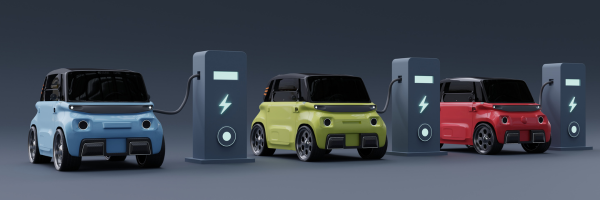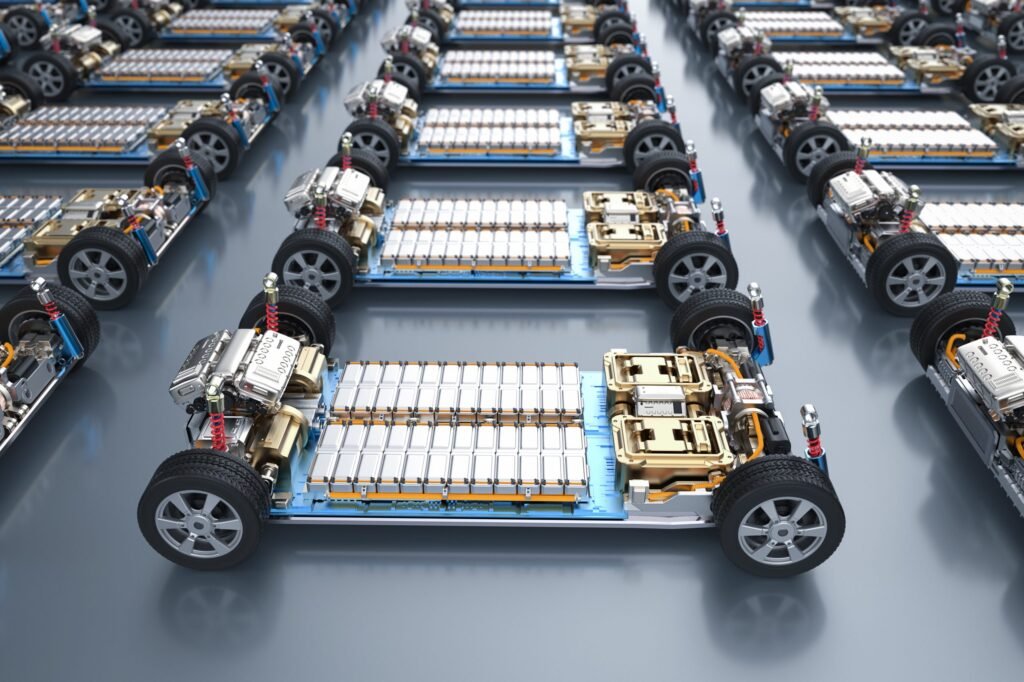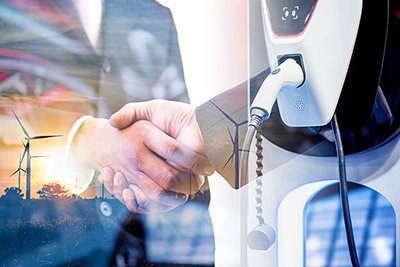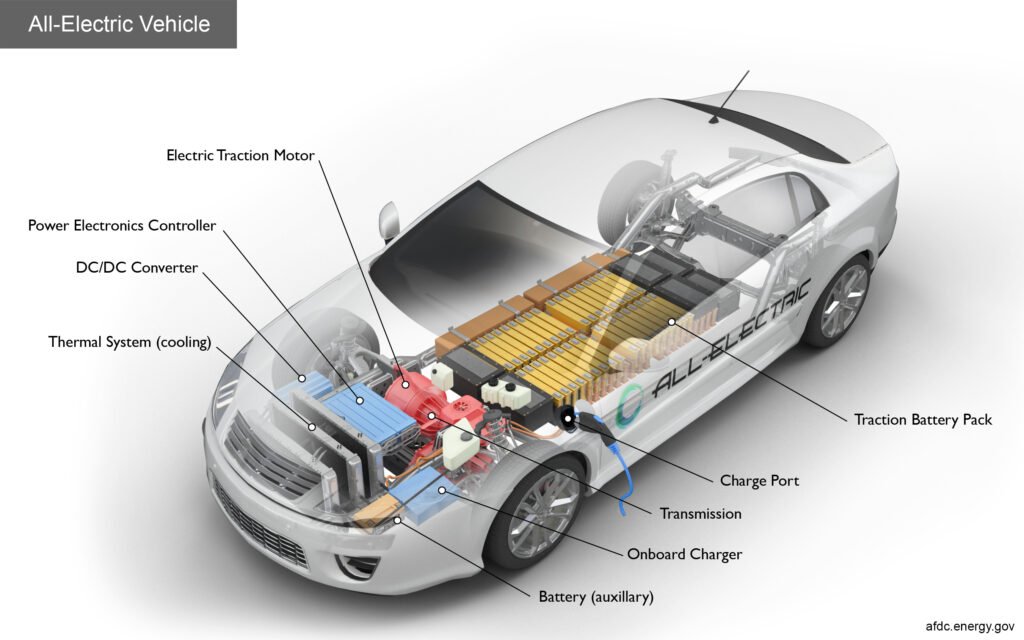Table of Contents
- Introduction
- Major Steps taken by Automakers.
- Conclusion
- Frequently Asked Questions
Introduction:
In recent years, the automotive industry has witnessed a significant shift towards sustainable mobility solutions, with electric vehicles (EVs) emerging as a frontrunner in the race towards reducing carbon emissions and combating climate change. In 2024, automakers continue to accelerate their efforts in expanding the adoption of electric vehicles, driven by advancements in technology, regulatory initiatives, and evolving consumer preferences. This article explores the major steps taken by automakers to propel the electric vehicle market forward in 2024.
The global automotive landscape has undergone a seismic transformation, driven by mounting concerns over climate change, air pollution, and the finite nature of fossil fuels. Against this backdrop, electric vehicles (EVs) have emerged as a beacon of hope, promising a cleaner, greener, and more sustainable future for transportation. As we stride into 2024, the momentum behind electric mobility continues to surge, propelled by a convergence of technological innovation, regulatory imperatives, and shifting consumer attitudes.
The year 2024 marks a pivotal moment in the evolution of electric vehicles, with automakers worldwide doubling down on their commitments to electrification. Buoyed by advancements in battery technology, a proliferation of charging infrastructure, and a growing chorus of government incentives, automakers are racing to electrify their fleets at an unprecedented pace. Moreover, the electrification drive isn’t merely a response to regulatory pressures or market trends; it’s a fundamental reimagining of the automotive industry’s role in shaping a sustainable future for generations to come.
Against the backdrop of increasingly stringent emissions standards and a groundswell of public demand for eco-friendly alternatives, automakers are embarking on a multifaceted journey towards electrification. This journey encompasses not only the development of electric vehicles themselves but also the establishment of an entire ecosystem to support their widespread adoption. From reimagining manufacturing processes and supply chains to forging alliances with energy providers and technology firms, automakers are leaving no stone unturned in their quest to accelerate the transition to electric mobility.
In this article, we delve into the major steps taken by automakers in 2024 to drive the expansion of electric vehicles. From the rapid proliferation of electric models to investments in charging infrastructure, from partnerships with governments to collaborations with energy sector stakeholders, each initiative underscores the industry’s collective determination to chart a course towards a cleaner, greener future. As we navigate the electrified terrain of 2024 and beyond, the road ahead may be fraught with challenges, but it’s also brimming with unprecedented opportunities to redefine the way we move, power, and inhabit our world.
Major steps taken by Automakers for Electric vehicles expansion in 2024.
1. Rapid Expansion of EV Models:

- Automakers have significantly expanded their electric vehicle lineups, introducing a diverse range of models catering to various consumer needs and preferences.
- Traditional automakers, such as Ford, General Motors, and Volkswagen, have committed to transitioning a substantial portion of their vehicle offerings to electric, with numerous new electric models hitting the market in 2024.
2. Investment in Battery Technology:

- Enhancing battery technology remains a focal point for automakers, aiming to improve the range, performance, and affordability of electric vehicles.
- Collaborations and investments in research and development of next-generation batteries, including solid-state batteries and advanced lithium-ion technologies, are prevalent across the industry.
3. Expansion of Charging Infrastructure:

- Automakers are actively collaborating with governments, utility companies, and charging network providers to expand the charging infrastructure for electric vehicles.
- Investments in fast-charging networks, including high-power chargers capable of delivering ultra-fast charging speeds, aim to alleviate range anxiety and facilitate long-distance travel for EV owners.
4. Integration of Sustainable Materials:

- Sustainability is increasingly becoming a priority for automakers, with a focus on integrating eco-friendly materials into electric vehicle manufacturing processes.
- Utilization of recycled plastics, bio-based composites, and other sustainable materials in vehicle interiors and exteriors contribute to reducing the environmental footprint of electric vehicles.
5. Partnerships and Alliances:

- Automakers are forging strategic partnerships and alliances with technology companies, energy providers, and startups to accelerate the development and deployment of electric vehicles.
- Collaborations range from joint ventures for manufacturing electric vehicles to partnerships for developing autonomous driving technologies and integrated mobility solutions.
6. Innovation in Design and Performance:

- Innovation in design and performance is driving the appeal of electric vehicles, attracting a broader range of consumers beyond environmentally conscious buyers.
- Automakers are leveraging electric propulsion systems to reimagine vehicle architectures, resulting in sleek designs, spacious interiors, and exhilarating performance capabilities.
7. Emphasis on Software and Connectivity:
- Software and connectivity features play a pivotal role in enhancing the user experience of electric vehicles, offering advanced functionalities and seamless integration with digital ecosystems.
- Automakers are investing in over-the-air software updates, AI-driven assistance systems, and connected services to deliver a futuristic driving experience to EV owners.
8. Market Expansion and Global Reach:
- Automakers are expanding their electric vehicle offerings into new markets worldwide, capitalizing on growing demand for sustainable transportation solutions.
- Initiatives to localize production, adapt vehicles to regional preferences, and establish sales and service networks facilitate the penetration of electric vehicles into diverse markets.
9. Government Collaboration and Policy Support:

- Automakers are actively engaging with governments and policymakers to advocate for supportive regulations and incentives that promote the adoption of electric vehicles.
- Collaboration with policymakers includes lobbying for increased funding for EV infrastructure, tax credits for electric vehicle purchases, and emissions regulations favouring zero-emission vehicles.
10. Focus on Affordability and Cost Reduction:
- Addressing the affordability barrier, automakers are striving to reduce the manufacturing costs of electric vehicles through economies of scale, technological advancements, and supply chain optimizations.
- Introduction of more affordable electric vehicle models and leasing programs aims to make electric mobility accessible to a broader spectrum of consumers.
11. Education and Consumer Awareness Campaigns:
- Automakers are investing in educational initiatives and consumer awareness campaigns to dispel myths, address misconceptions, and highlight the benefits of electric vehicles.
- Educational efforts encompass workshops, online resources, and marketing campaigns aimed at informing consumers about the environmental, economic, and performance advantages of electric vehicles.
12. Fleet Electrification and Corporate Initiatives:
- In addition to consumer vehicles, automakers are targeting fleet electrification by offering electric options for commercial vehicles, delivery fleets, and ride-sharing services.
- Corporate initiatives include partnerships with businesses and organizations to electrify their vehicle fleets, thereby reducing carbon emissions and demonstrating corporate social responsibility.
13. Advancements in Autonomous Driving Technology:

- Integration of autonomous driving technology into electric vehicles enhances safety, convenience, and efficiency, further driving the adoption of electric mobility.
- Automakers are developing electric vehicles equipped with advanced driver-assistance systems (ADAS) and autonomous driving capabilities, paving the way for future mobility solutions.
14. Collaboration with Energy Sector for Renewable Integration:

- Recognizing the synergy between electric vehicles and renewable energy sources, automakers are collaborating with energy companies to integrate electric vehicle charging infrastructure with renewable energy generation.
- Partnerships involve the development of smart charging solutions, vehicle-to-grid (V2G) technology, and grid-scale energy storage, enabling the optimized use of renewable energy for charging electric vehicles.
15. Environmental Stewardship and Carbon Neutrality Goals:
- Automakers are setting ambitious targets for carbon neutrality and environmental stewardship across their operations, including vehicle manufacturing, supply chain management, and corporate activities.
- Initiatives such as carbon offset programs, sustainable sourcing of materials, and investments in renewable energy projects demonstrate automakers’ commitment to mitigating their environmental impact.
16. Integration of Energy Storage Solutions:
- Leveraging the capabilities of electric vehicle batteries beyond transportation, automakers are exploring opportunities to utilize EV batteries as energy storage solutions for residential, commercial, and grid-scale applications.
- Repurposing retired electric vehicle batteries for stationary energy storage prolongs their lifecycle and contributes to the development of a circular economy for energy storage.
Conclusion:
As we draw the curtain on the narrative of electric vehicle expansion in 2024, it becomes abundantly clear that we stand at the precipice of a transportation revolution unlike any other. The concerted efforts of automakers, policymakers, and stakeholders across the board have propelled electric mobility from the fringes of innovation to the forefront of mainstream adoption. However, the journey towards a fully electrified future is far from over; it’s merely reached a crucial waypoint in its trajectory.
Looking back on the myriad steps taken by automakers in 2024, it’s evident that the vision of a world powered by clean, sustainable transportation is no longer a distant dream but an achievable reality within grasp. The rapid expansion of electric vehicle models, coupled with investments in charging infrastructure and battery technology, has laid a solid foundation for the mass adoption of electric mobility. Moreover, the emphasis on sustainability, affordability, and consumer awareness has helped reshape the narrative surrounding electric vehicles, transforming them from niche novelties into mainstream contenders.
As we gaze ahead into the horizon, the road to widespread electrification may present its fair share of challenges, from technological hurdles to infrastructural bottlenecks. Yet, it’s precisely in overcoming these challenges that the true spirit of innovation and collaboration shines brightest. By continuing to push the boundaries of what’s possible, by forging ever-deeper partnerships across industries and sectors, and by remaining steadfast in our commitment to a cleaner, greener future, we can navigate the twists and turns of the electrified road ahead with confidence and conviction.
In the final analysis, the story of electric vehicle expansion in 2024 is not merely a tale of technological progress or market dynamics; it’s a testament to the power of human ingenuity and collective action in the face of daunting global challenges. As automakers continue to accelerate their efforts, fuelled by a shared vision of sustainability and progress, the wheels of change are set in motion, carrying us towards a future where clean, efficient, and equitable transportation is not just a possibility but a fundamental reality. Together, let us embark on this electrifying journey, knowing that the destination holds the promise of a brighter, cleaner, and more sustainable tomorrow for all.
Frequently Asked Questions:
The expansion of electric vehicles by automakers in 2024 is primarily driven by several key factors. These include advancements in battery technology, which are improving the range and performance of electric vehicles, as well as regulatory initiatives promoting cleaner transportation options. Additionally, growing consumer demand for sustainable mobility solutions and the emergence of supportive charging infrastructure are further incentivizing automakers to invest in electric vehicle expansion.
Automakers are addressing range anxiety associated with electric vehicles through multiple strategies. Firstly, advancements in battery technology are extending the range of electric vehicles, providing drivers with more confidence in longer journeys. Moreover, the rapid expansion of charging infrastructure, including the deployment of fast-charging networks, is making it easier for EV owners to recharge their vehicles conveniently and quickly, alleviating concerns about running out of battery power.
In 2024, automakers are implementing various measures to make electric vehicles more affordable for consumers. This includes leveraging economies of scale in manufacturing processes to reduce production costs, thereby lowering the price tag of electric vehicles. Additionally, some automakers are offering attractive financing options, subsidies, and incentives to encourage consumers to make the switch to electric vehicles, making them more accessible to a wider range of buyers.
Automakers are increasingly focusing on addressing the environmental impact of electric vehicle manufacturing and disposal. This includes initiatives to reduce the carbon footprint of manufacturing processes by using renewable energy sources and implementing sustainable practices throughout the supply chain. Additionally, efforts are being made to enhance the recyclability of electric vehicle components and batteries, ensuring responsible disposal and minimizing environmental harm.
Government policies and incentives play a crucial role in driving electric vehicle expansion in 2024. Many governments around the world are implementing policies such as tax credits, subsidies, and rebates to incentivize consumers to purchase electric vehicles. Additionally, regulatory measures such as emissions standards and vehicle electrification targets are encouraging automakers to invest in electric vehicle development and expansion to meet regulatory requirements and capitalize on growing demand for clean transportation options.

